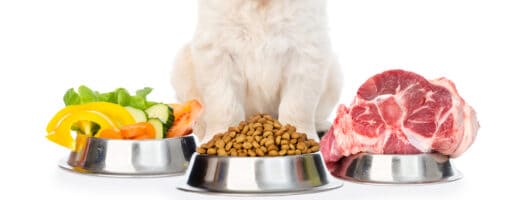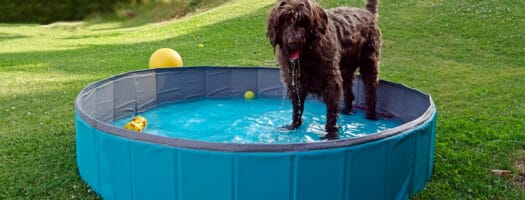A Complete Guide to Brushing Your Dog’s Teeth
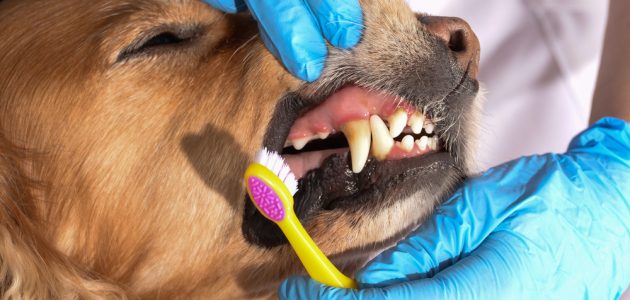
Brushing your dog’s teeth isn’t just great for health and hygiene, but it’s also essential for keeping both you and your pet happy and beaming.
From preventing being knocked back by atrocious breath to nastier conditions such as dental infections and diseases, it’s always best you keep your dog’s teeth in tip-top shape from the get-go. Facing your dog’s teeth for the first time is never easy, though, and can actually be somewhat daunting!
But help is at hand, as anybody can better maintain their pet pooch’s oral hygiene in no time with some straightforward, easy-to-follow advice.
A Quick Guide to Brushing Dog Teeth With Care
Planning the time for a toothbrushing session that suits both you and your dog is key, as you want to fit into a timeline that works for you both.
Scheduling
Unlike humans, it doesn’t have to be daily! Just three days a week can make all the difference. Find a time that’s right for both of you; consider when you’re available, and they’re most relaxed – perhaps before dinner or after a walk?
Preparation
First of all, you don’t want to tower over your dog as that will only make them nervous. Position yourself at equal height instead, making sure to stop your attempt any time that they’re anxious – you can always come back later if need be. Keep them calm with lots of love and strokes, and then you can begin by getting your dog used to your fingers being in their mouth. Run your fingers across their teeth and gums. It’s in your best interest to begin slowly, as you make sure you’re both relaxed for a successful tooth brushing session.
Paste and Brush
Using a regular toothbrush is fine, but specialized doggy toothpaste – like this one – is imperative (human brands can cause havoc on your pet’s stomach). Try some different brands to see what your pet has a taste for, and if they like it they may even look forward to their teeth getting a good brushing!
Brushing
Depending on the size of your dog’s teeth, position the brush along the upper gum line. Working at a 45-degree angle to the teeth, brush any plaque down from the gums in small, gentle, circular motions. Try to build to thirty seconds brushing on each side of the mouth, though this might not happen right away.
Telltale Signs
While the constant stinky doggy breath is a massive giveaway that something may be up, you still need to keep a close eye on your dog’s teeth and gums. We’ll look at this in greater detail later, but inflamed gums and any loose, exposed teeth and general discomfort will need treatment.
Time for a Treat
You want to make sure that your pup looks forward to their next session, so rewarding them is always the top priority. This is also an excellent chance to provide different snacks to keep their teeth even healthier, which we’ll inspect in closer detail later on.
Now you have the basics down and know what to expect, it’s time to examine the reasons why brushing your dog’s teeth is so vital.
Why the Fuss?
It’s no secret that some tend to overlook their dog’s dental care, and it’s perfectly understandable as we don’t always have the time. Paying attention early on, though, can help prevent more time-consuming and costly conditions from cropping up further down the road.
For example, issues like periodontal disease are something you don’t want your four-legged friend enduring. Starting as a scrap of seemingly harmless plaque, it can soon build up, engulfing the tooth and the surrounding gum-line. Eventually, with the gums in agony and inflamed, the tooth finally becomes infected, and it’s time to say goodbye to the prized fang as it falls out once and for all.
That’s nothing to smile about!
Not only that, but there’s the rest of the dog’s health to contend with, as poor dental hygiene can lead to overall illness. With the kidney, heart, and liver also being affected by severe Periodontal disease, it’s of the utmost importance to take care of early on. But fear not, as the warning signs can easily be spotted once you know where you’re looking.
Signs of Poor Dental Health
Once you’re brushing the dog’s teeth regularly, it will become second nature to look for any problems arising. While a light bit of bleeding now and again is nothing to fret too much over, you need to pay attention to the louder warning signs.
- Halitosis: well, this one’s simple. If your dog’s breath is continually peeling the paint off the walls, then it may be time to take note.
- Discolored Teeth: as with any teeth, if your dog’s chompers are staining an off-brand yellow, then that’s a definite sign of plaque and tar building up.
- Bleeding Gums: from a damaged bleeding gum-line to exposed tooth roots, this is a clear signal that a vet check-up is needed.
- Loss of Appetite: eating with a tooth that’s in agony is bound to be hard work, in which case your dog may not be their usual ravenous self.
- Blood Drops: heading back to the food bowl, and around the house in general – droplets of blood left behind is another bad sign.
- General Behavior: if things get bad, listen to your pup as they’ll tell you themselves. This may be one situation where they’re decidedly not sitting down. Constant whimpering is usually a case that something’s up.
Sometimes, though, despite our best intentions and doing everything in our power to keep our furry friends fit and healthy, fate simply has other plans. In these cases, it is time to bring in the experts.
Calling in the Professionals
If it comes to a point where treatment is unavoidable, then it’s time to bring in the vet. They have the anesthetics and tools necessary for severe cases, including the removal of teeth where necessary.
They can also provide X-rays, which allow you to get a clearer picture of the teeth themselves, seeing where any abnormalities may lie. Your vet can then offer any prescriptions necessary. Also, be sure to ask for general advice during a routine check-up, as this can help give you a clearer understanding of your dog’s specific requirements and what steps to take in the future.
Do and Do Not; Or Those Teeth Will Rot
Rhyming aside, it’s critical to bring home a structured routine and make it a part of your every day. Once set in stone, it’ll become natural.
- Do make sure to buy the right food. From treats to meal-time, specially formulated food can make all the difference in dental care. Some can even clean your doggo’s teeth further.
- Do set aside time for a schedule. While daily brushing is best, three to four times a week is often more feasible, and a routine can help both you and your dog, as they will come to expect it.
- Do treat them for their patience, making it a game with prizes at the end. Your canine friend will then come bouncing back for more.
- Don’t use your toothpaste. While dog teeth may be the same, it’s their stomach that differs, with it becoming toxic, and an upset tummy is not something you want.
- Don’t use anyone other than a licensed professional to carry out treatment. The necessary anesthetics, equipment, and training are essential, and anybody offering a quick clean may seem cost-effective, but is a definite no-no in the long-run.
- Don’t regularly mix up poor substitutes and human food. A quick chip off your plate won’t do too much damage, but a constant junk diet will negatively affect the teeth and your dog’s overall physiology.
With these rules being accurate for all dogs, there’s also room for being more specific when brushing your own doggy’s dentures. Each breed is individual, and their treatment may differ.
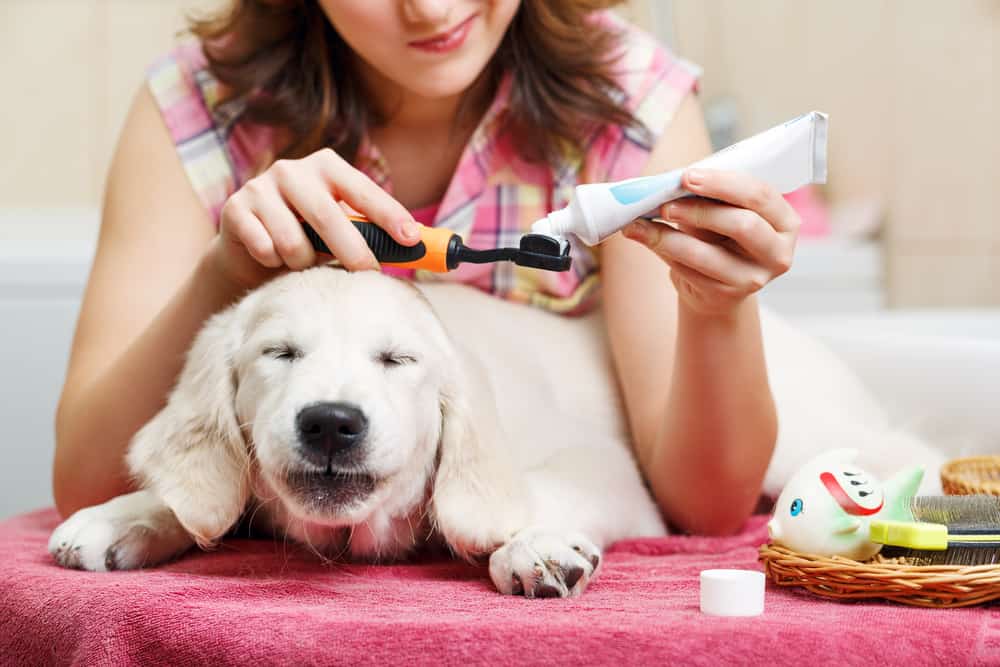
Different Approaches to Brushing Different Breeds
When it comes to a dog’s jawline, dog breeds can vary in their alignment and shape. Taking note of this is useful, as you need to prepare yourself for brushing inside the mouth. From the toothbrush’s size to the brushing motion, the species of dog will affect this.
Smaller dogs, such as Shih-Tzus and Chihuahuas, will have smaller mouths and teeth. This will be a little fiddly at first, as you’ll need to work at the back of the mouth, getting past the lips into the cheeks.
Another thing to look out for is the snout shape, as short flat noses alongside small mouths can mean that the dog is typically more prone to build up. The teeth are squashed closer together, meaning plaque looms as a constant menace.
Make sure to brush more regularly if this is the case. You need to make sure you cover the whole mouth, including the molars, lifting the lips, and scrubbing every nook and cranny to make it worthwhile. It’s the canine teeth you want to be especially careful with, as these are the longest and sharpest!
Your dog’s mood is also an essential factor to consider here, as you don’t want to upset them. Different breeds will have varying temperaments, and keeping them happy is vital. No-one knows your dog like you do, though, so this will be down to you, with you setting your ground rules.
What’s Needed
As mentioned earlier, a reward for good behavior when brushing always goes down well, but what should you look for when preparing to brush? There are many issues regarding Fido’s dental care, and it’s crucial not to neglect any. Getting yourself ready is all-important, so what items should you consider when dealing with that murky abyss?
Hard Food
Hard food helps keep the teeth durable and more resilient, and chewing dry crunchy substances helps remove any tartar and plaque build-up.
Toothbrush
There’s a range of choices here, and the size and shape of the mouth will be the main determining factor. From single heads to dual-headed brushes that cover both ends of the mouth and even fancy electric ones, you’re spoilt for choice, so you’ll need to decide what’s the best, most comfortable fit. Don’t worry, your dog will let you know!
Toothpaste
This will usually be a meaty flavor, with several specially formulated brands available. Give your dog a lick of as many possible, seeing which they respond best to, and stick with that one!
Treats
Some of this may fall under food, but it’s also useful to consider how chew toys and extra goodies may affect the teeth. For instance, if a dog is particularly excitable, they may end up fracturing their incisors on a somewhat brittle bit of bone.
While you can buy other extras, such as dental pads to help wipe away any excess food or scraps, these are the basics you’ll need to consider from the outset.
Teeth in Training
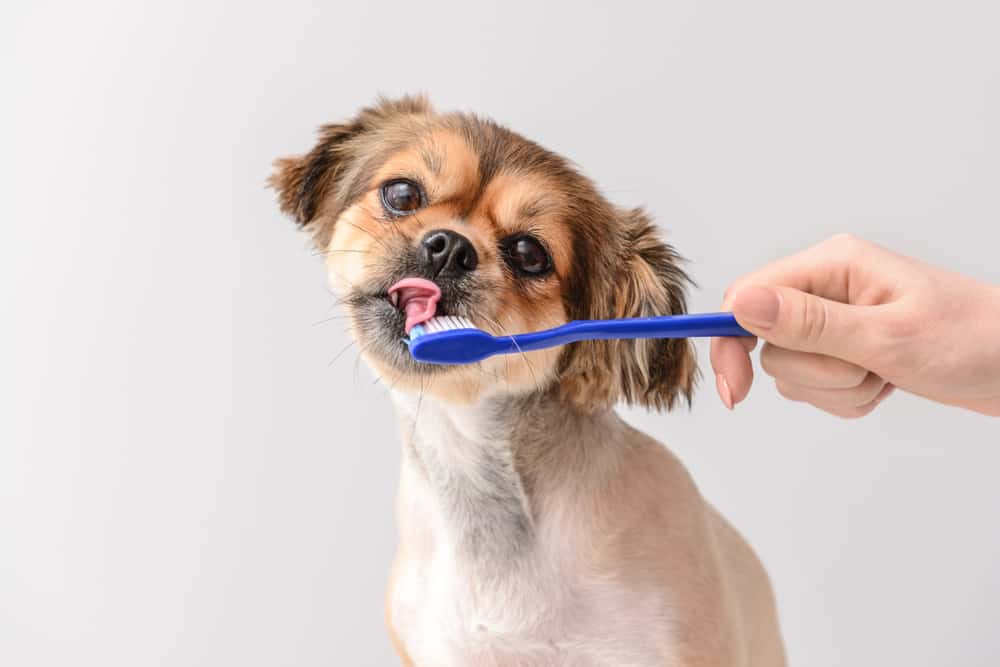
Like everything with a well-behaved dog, training is critical, and brushing their teeth is no exception. Behavior is always going to be of utmost importance here, so it’s best to ease your canine friend into it, making them comfortable and relaxed.
Begin as early as possible, starting from when they’re a puppy. While this may always not be feasible because your best friend may be a rescue dog or have unforeseen behavioral issues, speaking to a vet during your regular check-ups will provide you with a full range of options here.
Professional trainers are also sometimes necessary, so don’t be afraid to reach out and get some extra help for a fuller guide to brushing dog teeth with due care. Remember, you don’t want to force anything, as your dog will end up resenting you and your scrubbing sessions, ultimately making it a chore for you both. That’s not what anyone wants.
That said, for those giant mouths, it’s sometimes best to use a muzzle in the earlier stages, just as you and your doggy get used to the sensation of your fingers slipping across their gums and teeth. As you can probably imagine, that could be quite an unfamiliar feeling, and you don’t want any missing digits!
Like everything else, gently does it – you want to ease your pet pooch into the practice. Then it’s merely a case of getting the two of you into a routine, working up a schedule that’s best for the both of you.
Keep It Up!
Once you have everything in place, brushing your dog’s teeth should become a lot easier. What previously seemed overwhelming will then be second nature without a moment’s thought. Your dog will be happier, and them breathing on you will be much more pleasant. Then it’s just about keeping that smile gleaming all year round.
